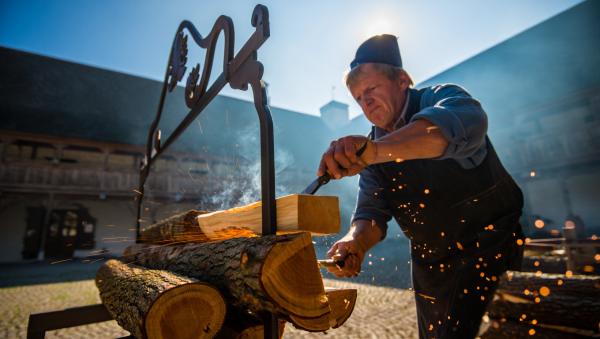
Building Firewood Rack? Like Stocks—Plan Smart, Stack Strong, Hold Tight!
May 23, 2025
There’s an ancient satisfaction in stacking firewood—a simple act, yet never quite as simple as it first appears. The logs are heavy, unpredictable in shape, and the air turns sharp as you work. To build a firewood rack is to negotiate with chaos; to impose order on a future you cannot fully control. Each log must fit, align, and support the others, or else the stack will teeter and collapse. Winter does not care for excuses. Stack it right, or freeze later.
The task demands more than muscle. It’s a patient choreography of foresight and discipline. You must judge the wood: is it seasoned or green, knotty or straight? The rack itself—sturdy enough to bear the weight, elevated to guard against rot, open to let the wind dry the fibres. There’s a subtle promise in every clunk and thud: preparation now means comfort later. But the smallest negligence—a slanting base, a haphazard pile—can spell cold regret when the wind howls and the world turns white.
The Architecture of Readiness
Stacking firewood is a meditation on time. It is, at heart, a wager: that your work today will shelter you from tomorrow’s hunger. There’s risk in the process—sometimes hidden. A rack built on soft ground will sink. Damp, crowded logs will rot from within, betraying you just when you need them most. So you work methodically. You learn to gauge the weather, the quality of each piece, and how many you’ll need when the temperature plunges. This is not just about surviving, but thriving: nothing burns so warmly as wood you prepared yourself.
But there’s a paradox here. The more meticulous your stack, the greater your sense of security. Yet, too much caution—overbuilding, hoarding—can tie up energy and space, leaving little room for the unexpected. The woodpile is a living metaphor: safety lies in balance, not excess.
Patience, Preparation, and the Art of Risk
As you stack, you’re forced to confront your own impatience. There’s a temptation to rush, to throw logs into a pile and call it a day. But the consequences of haste are revealed months later, in the heart of winter, when a collapsed stack leaves you shivering. There is an art to pacing yourself: pausing to check alignment, adjusting as you go. Failure is not a single event, but the result of a hundred overlooked details.
This is where the story begins to shift. For the virtues required to build a firewood rack—patience, discernment, acceptance of risk—are the very same qualities demanded by successful investing. The connection is more than metaphor. Building capital, like stacking logs, is a preparation for winters that are certain to come, though their ferocity is always a mystery.
From Firewood to Finance: The Principles That Bind
The Foundation: Secure Your Base
Just as a firewood rack needs a solid, level foundation to stand the test of storms, your financial journey must begin with stability. Rushed investments, like a hastily built rack, leave you exposed. The 2008 financial crisis in the USA was a bitter winter for many: portfolios built on unstable subprime mortgages crumbled when the weather turned. Those who had anchored their capital in sound, time-tested assets found themselves better protected, less inclined to freeze in panic.
Seasoning and Timing: When Preparation Meets Opportunity
Seasoned wood burns hot and clean; green wood smokes and sputters. In finance, patience is seasoning. Warren Buffett’s oft-quoted advice—“the stock market is a device for transferring money from the impatient to the patient”—echoes the wisdom of the woodpile. Investors who chase hot tips or time the market rarely fare better than those who quietly accumulate, allowing ideas and assets to mature. Timing matters, but so does the willingness to wait.
Weatherproofing: Diversification and Adaptability
A clever stacker leaves space between logs for air to circulate, preventing rot and decay. Likewise, investors diversify. Overconcentration in a single asset or strategy is like piling your logs in one damp corner: eventual ruin is inevitable. The best portfolios, like the best woodpiles, are designed to withstand shifting seasons. Adaptability—rebalancing assets, rotating between sectors—keeps capital dry and ready for the coldest nights.
Risk and Resilience: Expecting the Unexpected
No one can predict every storm. Even the best-built woodpile faces the risk of flood, fire, or theft. Investors, too, must contend with black swan events—a sudden market crash, a global pandemic, a political upheaval. The lesson is not to eliminate risk, but to build resilience. This means holding a reserve, keeping part of your stack easily accessible, and never betting everything on a single, untested support.
The Rhythm of Cycles: Markets and Seasons
There is a natural rhythm to wood and to wealth. The diligent stacker learns to anticipate the seasons, gathering through abundance and rationing through scarcity. Markets, too, move in cycles—bulls and bears, boom and bust—mirroring the eternal round of summer and winter. The wise investor is a student of cycles, saving in fat years and resisting the urge to burn through reserves at the first sign of cold. This cyclical awareness is a psychological anchor, preventing panic in downturns and over-exuberance in upswings.
Behavioural finance teaches us that most people are terrible at managing cycles. In the USA, retail investors tend to buy high during bull markets and sell low in bear panics—precisely the opposite of what the firewood metaphor demands. The discipline to stack when others are idle, and to hold when others burn through their reserves, is what separates the comfortable from the desperate.
Decision-Making Under Uncertainty: The Stack as a Mindset
Stacking firewood, like managing capital, is an exercise in decision-making under uncertainty. You never really know how long or how hard the winter will be. You rely on experience, gut instinct, and a willingness to learn from past mistakes. The stack is both a product and a process: an evolving structure that reflects the builder’s character as much as their circumstances.
Many traders and investors in the USA stock market fall prey to recency bias, assuming that last year’s mild winter (bull market) guarantees another. The prudent stacker knows better. They prepare for the worst while hoping for the best, always aware that comfort today is no shield against tomorrow’s cold.
The Subtle Art of Letting Go: When to Burn, When to Hold
Finally, there is a lesson in knowing when to use what you’ve stored. Hoarding wood past its season leads to decay, and clinging to outdated investments can cost more than letting go. The art lies in discernment: burning the right logs at the right time, harvesting gains when your rationale is sound, and resisting the twin temptations of greed and fear.
In both woodpiles and wealth, the ultimate goal is not mere accumulation, but sustainable warmth—the capacity to weather hardship and enjoy comfort. The best stackers and investors share an ability to act with intention, balancing preparation with the flexibility to adapt when reality diverges from expectation.
Returning to the Stack: A Final Illumination
When you return to your firewood rack, let its order and heft remind you: every log is a decision, every gap a risk, every sturdy beam a foundation hard-won. Building firewood rack is not just survival, but a philosophy—a living testament to how we manage uncertainty, balance patience and action, and prepare for inevitable winters.
The next time you consider your investments, envision the stack you’ve built. Is it haphazard or intentional? Will it see you through the longest cold? The comfort you feel, as the fire crackles and the world outside turns harsh, is the reward for thinking ahead—stacking right, in wood and in wealth, so you never need to freeze while others scramble for warmth.










